Until Earl McGhee was hired in 2018, Dodge County, Wisconsin, had never had a Black sheriff’s deputy, so when the county sent him to a police academy at a local technical college, McGhee wasn’t all that surprised to be the only Black cadet in the class.
But a few weeks into the course, McGhee was stunned when the instructor used the N-word during a lecture. “Out of nowhere he looks me in the eyes and points his index finger directly at me” while uttering the slur, McGhee wrote in a statement to the school, the Madison Area Technical College, shortly after the Jan. 25, 2019, incident. “The entire class was looking at me.”
The instructor apologized the next day, but only after McGhee spoke up in class and told him how offensive it was to hear that word coming from his teacher. Only two of the 24 classmates later said they’d had a problem with what happened.
<strong>“I came here to learn how to become a police officer, not to be verbally abused through racial slurs.”</strong>The instructor later acknowledged during a school investigation that he used a variety of racist and sexist epithets in class, during discussions about some of the people and situations they may encounter on the job.
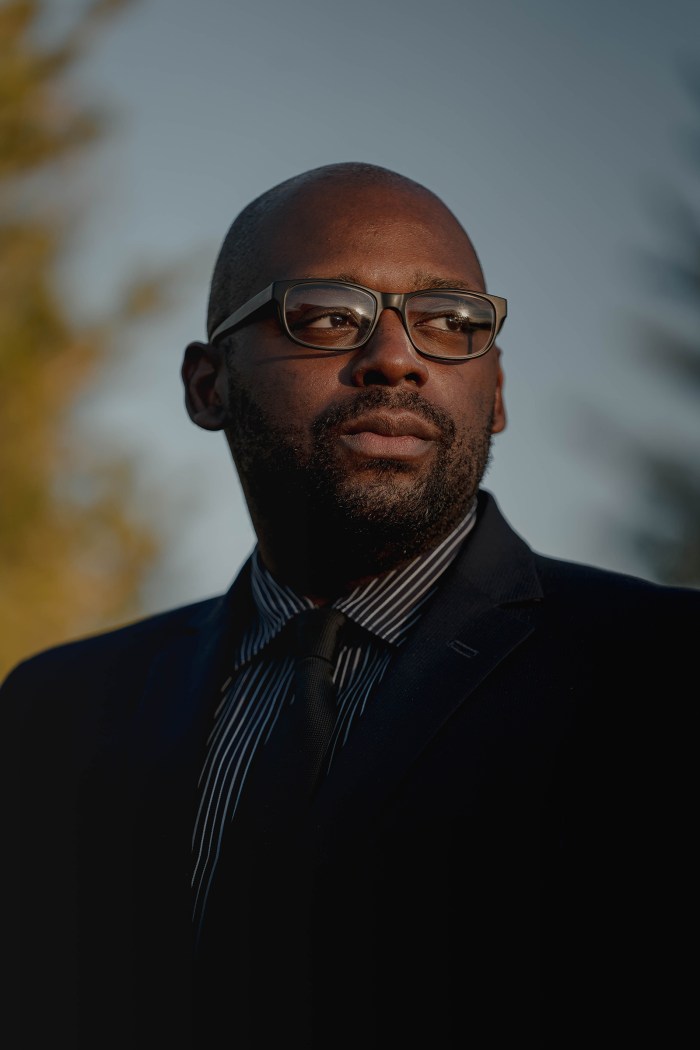
Whatever the context, McGhee says the incident, compounded by his white classmates’ silence, took what he’d hoped would be a thrilling career opportunity and turned it into “the worst experience of my life, by far.”
“I came here to learn how to become a police officer, not to be verbally abused through racial slurs,” he wrote in a formal complaint about the instructor, who the college concluded had violated its discrimination and harassment policy. It said the instructor was “removed from all classes” and no longer works there.
McGhee says many of the academy instructors were retired cops with patchy knowledge about modern policing procedures and that his fellow cadets seemed inured to casual racism. “These college police academies are different,” he says. “They literally hire anybody.” McGhee left the academy and gave up the job, even though he’d moved from Illinois to take it.
For many people, the term police academy conjures up images of military-style boot camps run by city police departments, where cadets stay in dorms and top brass are constantly monitoring the training. But the reality is that the bulk of America’s nearly 18,000 police departments rely on hundreds of private universities and community and technical colleges to provide basic law-enforcement training for people who want to become police officers.
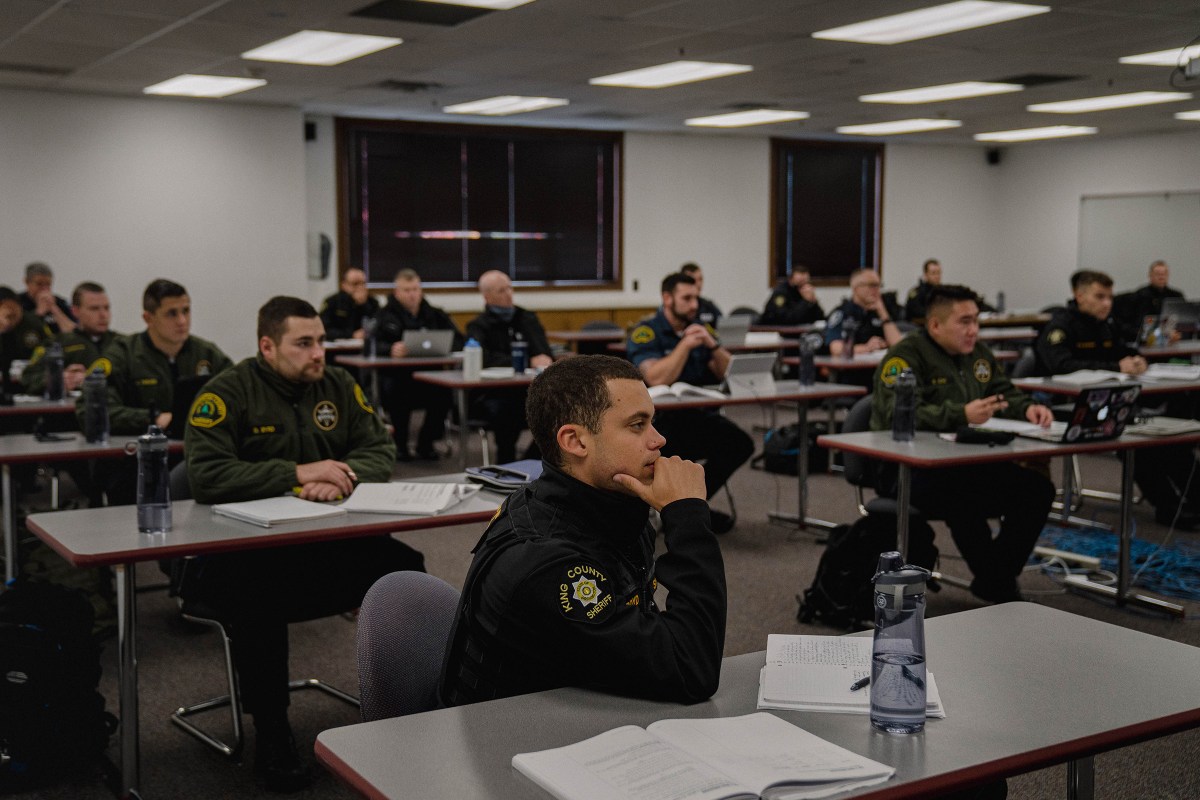
More than two-fifths of the 45,000 new local law-enforcement recruits who received basic law-enforcement training in the U.S. from 2011 to 2013 did so at two-year colleges, four-year colleges or technical schools, according to the most recent data from the Bureau of Justice Statistics. Only a few states, including Washington and Oregon, have just one state-run police academy for anyone who wants to become a police officer. The more common model is Ohio, which has 68 police academies.
There, big-city police departments like Columbus and Cincinnati run “closed” police academies, attended only by people who have been hired by the department. Departments pay recruits’ tuition and salary while they’re at the academy. Outside of those cities, community colleges and career centers run “open” academies, where some smaller departments send their recruits and cover their tuition and salary. But anyone who can pay the tuition, which is often more than $5,000, is welcome to attend these “open” academies, even if they haven’t secured a job in law enforcement.
Learning a professional skill at a private university or community college is not unusual—lawyers and hairdressers and nurses all receive their training that way. But the stakes are higher for a job that comes with the power of arrest and a gun. Though some independent academies may provide excellent training, criminal-justice experts say there are inherent problems in outsourcing police training to schools that have a financial incentive to enroll as many people as possible. Among them: problem cadets are less likely to be flagged before they graduate; the policing methods taught vary drastically across schools; and with no formal oversight, instructors with racist and sexist attitudes may continue to teach for years.
“The big urban areas—their academies are Cadillacs, and I would say that the other schools, at tech schools and some of the colleges … I’d say they’re Chevrolets,” says Terry Russell, the executive director of the National Alliance on Mental Illness in Ohio, who served on an advisory board that investigated the state’s system of law-enforcement training in 2015. “We were concerned—do they get the same police training [at community colleges] as you get at the Columbus police academy? It was obvious they don’t.”

Just 67.5% of people who attended a police academy at Clark State Community College and took the state exam passed on their first try, compared with 100% of those enrolled in the Cincinnati police department’s academy, according to Ohio data from 2018, the most recent year available. At Terra State Community College, 57% of those who took the state exam passed on their first try. At many open academies, cadets drop out before even taking the exam: nearly 40% of the people who started their training at Terra State did not finish, state data shows.
In Minnesota, which became the epicenter of protests about policing after the death in May of George Floyd, the majority of police officers pay their own way through training at a community or technical college. All of the officers present when Floyd was killed received their basic training from state community and technical colleges. (Minnesota is in the middle of a rulemaking audit that may change the way police are trained.) Officers currently being investigated for excessive use of force in Wisconsin and Pennsylvania also received their basic training at private universities and community and technical colleges.
Many programs at community and technical colleges are taught by retired cops who use a military-style teaching method that incorporates war stories from police work and warns recruits that they will face a choice on the streets: kill or be killed. That differs from the type of training that criminal-justice experts have called for, which emphasizes de-escalating confrontations, working with and listening to community members and teaching cadets to recognize signs of mental illness.
The old-school method can make it more difficult to attract women and candidates of color (like Earl McGhee) at a time when police departments, which remain disproportionately white and male, are under pressure to better reflect the communities they serve.
“It really left a bad taste in my mouth just because of the way I saw some of the instructors” behave toward certain students, says Vanessa Herrera, who abandoned her plan to become a police officer after briefly attending a community-college academy in Fullerton, Calif. The state suspended the school’s certification, citing a litany of problems, but Herrera says it was the instructors’ aggressive behavior that most disturbed her.
“After seeing—this is how you guys treat us? This is how you guys are going to be with us? I don’t know that I want to do this then,” she says.
Where it’s easier to become a barber than a cop
No one is regulating police training on a national level. There are no federal minimum requirements for the amount of time cadets spend training to become police officers or for what they must study, and no national system for licensing officers. Though Rhode Island requires 22 weeks of basic law-enforcement training, Georgia requires a minimum of 11— while a barber needs 1,500 hours of training, or more than 37 workweeks, to even qualify to take the licensing exam in the same state. Hawaii has no training standards or minimum qualifications for police officers. Many states allow 18-year-olds to become police officers. Most do not require implicit-bias or de-escalation training.
In some states, it’s possible to join a police department and go out on patrol, armed with a gun and a badge, before finishing at a police academy or even enrolling in one. That’s the case in Arkansas, where in 2012 Nancy Cummings, who had not yet attended basic training, fatally shot Carleton Wallace in the back while attempting to handcuff him in the town of Alexander. Cummings, who had brought her daughter along on patrol that day, said she could not remember pulling the trigger. (A federal jury later cleared her of liability.) This year, a South Carolina police officer was shot and killed by a suspect when he tried to make a traffic stop; the officer, who was on patrol by himself, was scheduled to start his basic law-enforcement training eight days later.
It is also nearly impossible for members of the public to find out where police officers were trained or if they are certified. Even with the help of lawyers, getting the training and educational backgrounds of many officers for this article—including Derek Chauvin, who pressed his knee into George Floyd’s neck for nearly nine minutes—was nearly impossible.
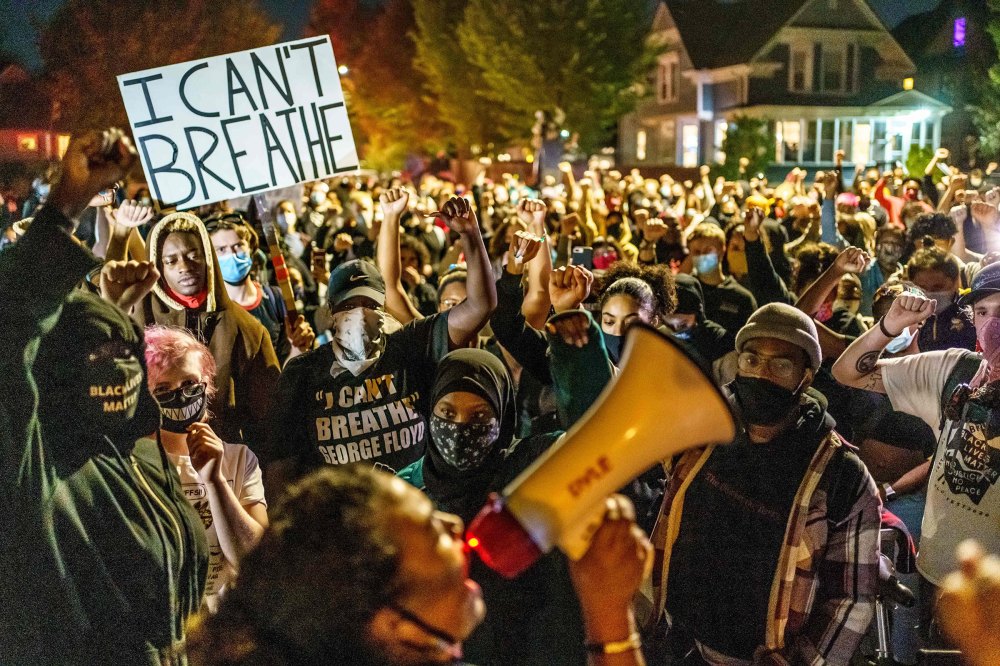
The state board that certifies officers in Minnesota says that it could not locate Chauvin’s training records but that he was certified as a peace officer. The city of Minneapolis’ personnel file on Chauvin says he attended two different community colleges and a public university over the course of six years to fulfill his basic training obligations; he was enrolled in the Center for Criminal Justice and Law Enforcement in Brooklyn Park, Minn., in 2000 when he applied to become a city community-service officer (essentially a junior police officer), but the file doesn’t say if he completed his training there.
The city of Erie, Pa., says it does not have any records of where or when Joshua Allison, an officer who had three excessive-force lawsuits filed against him, received basic training. The police department in Sacramento refused to provide the names of the schools where Terrence Mercadal and Jared Robinet, officers who shot and killed 22-year-old Stephon Clark in his grandparents’ yard, were trained, saying this would “constitute an unwarranted invasion of personal privacy.”
Read more: America’s Policing System Is Broken. It’s Time to Radically Rethink Police Safety
By contrast, I found the license number of the woman who cuts my hair in California, and its expiration date, in 10 seconds by searching public records online. When I looked up a few police officers in California using the same database, the response was “no documents found.”
Records do show that three of the four officers fired after their involvement in Floyd’s death received training at Hennepin Technical College. Jeronimo Yanez, the St. Anthony, Minn., officer whose 2016 fatal shooting of Philando Castile during a traffic stop was recorded by Castile’s girlfriend, was hired after training at a community college in Hibbing, Minn. The city of Brooklyn Park, Minn., hired Jason Chadbourne as an officer in 2013 after he had been trained at Fond du Lac Tribal and Community College; nine months later, Chadbourne shot Shoua Yang, who was in his car leaving a party. Brooklyn Park paid Yang, who lost a kidney as a result of his injuries, a $2.85 million settlement.
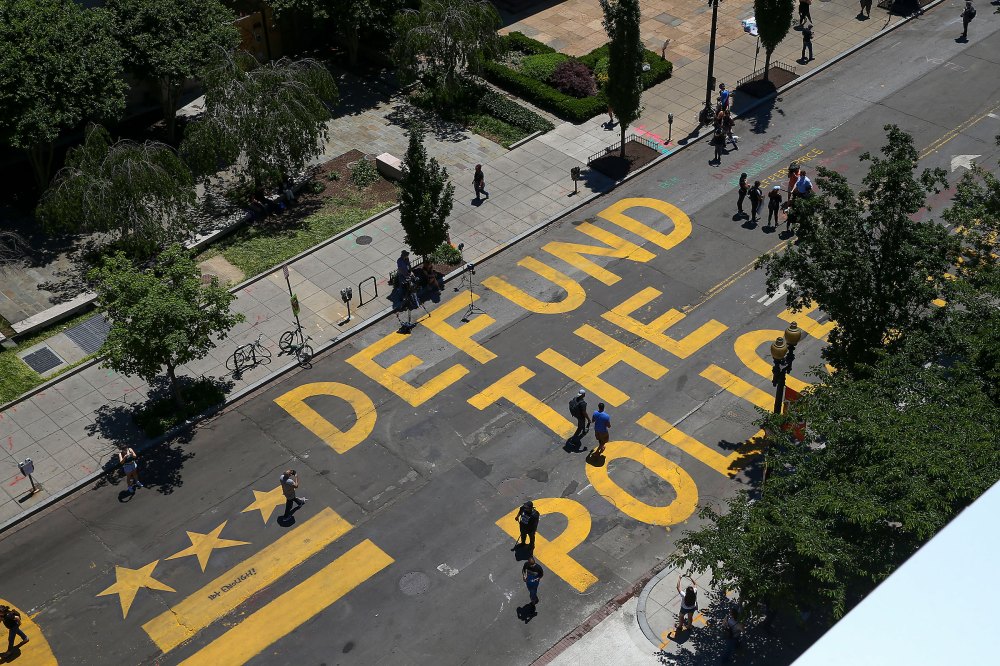
Minnesota isn’t the only state that relies heavily on independent colleges and universities to provide law-enforcement training. Joseph Mensah, a police officer in Wauwatosa, Wis., who fatally shot three people in three separate on-duty incidents between 2015 and 2020, received his basic training at Madison Area Technical College, the same school Earl McGhee attended. (Mensah was not prosecuted in any of the incidents; his resignation from the department was announced Nov. 17.) Rusten Sheskey, the Kenosha officer who fired seven shots at Jacob Blake in August, was trained at Waukesha County Technical College in Pewaukee, Wis.
<strong>“It’s like raising a kid. If you let me do something like put a knee on the neck, and you don’t punish me or discipline me for it, then I’ll do it again.”</strong>Erie, Pa.—the city that reported having no training records on officer Joshua Allison—said two police officers who were accused of kicking and injuring a Black Lives Matter protester in May, David Smith and Anthony Attalla, trained at the police academy at Mercyhurst University. So did Erie patrolman Nicholas Strauch, who was accused of repeatedly punching a suspect in the head during a violent arrest. Fullerton, Calif., officers Manuel Ramos and Joseph Wolfe, who were captured on video beating a mentally ill homeless man who later died, got basic training at Fullerton College, the same school Vanessa Herrera briefly attended. (Ramos and Wolfe were later cleared of all charges related to the man’s death.)
In reporting this story, I talked to people who attended police academies at community colleges and technical schools in Pennsylvania, North Carolina, California and Wisconsin, and reviewed lawsuits involving academies at community colleges in California and Maryland. The cadets’ stories and lawsuits make clear that some police academies at local colleges are failing to provide adequate training to cadets, and that state boards tasked with ensuring quality don’t have the resources to hold these schools accountable. Two cadets who trained at community colleges in Wisconsin and Pennsylvania say instructors gave students the answers to tests minutes before administering them. A cadet who trained at a technical college in North Carolina says his class was taught to pinch the inside of someone’s arm when making an arrest to make it appear as if the person was resisting officers.
Of course not all problems in modern policing can be linked to basic law-enforcement training. But academies are where cadets first learn how to behave. “Training is where it starts,” says Geoffrey Alpert, a professor in the Department of Criminology and Criminal Justice at the University of South Carolina, who studies police training. “It’s like raising a kid. If you let me do something like put a knee on the neck, and you don’t punish me or discipline me for it, then I’ll do it again.”
American policing: a local affair
Traditionally, law enforcement in the U.S. is a local affair. As settlers moved west in the 19th century, communities set up their own sheriff’s offices, sometimes because there was not yet a state established to control law enforcement. Policing remained localized because Americans were resistant to the idea of a standing army policing their streets, says Paul Hirschfield, a sociology professor at Rutgers University. While in much of Western Europe policing and training is nationalized, in the U.S. today, nearly half of the 18,000 police departments have fewer than 10 officers, according to the Bureau of Justice Statistics. Each goes about training in a different way. Money often dictates how.
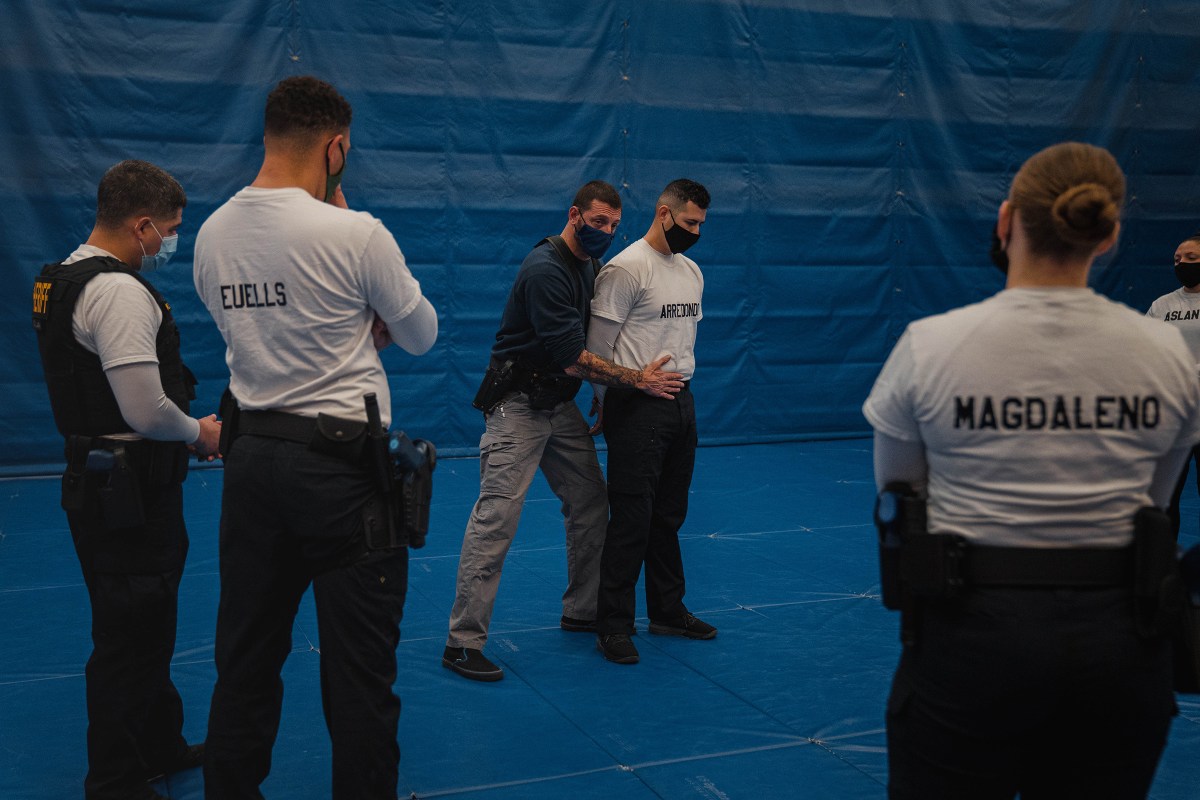
Amid a growing movement toward police professionalization that started in the late 1950s, states set minimum training standards but left it up to individual departments to decide how to meet them. Big cities like New York and Los Angeles could afford to set up their own police academies. They screened and hired cadets, then paid their salaries as they attended training.
Small departments could not afford to do this, so they sent recruits to outside academies. Sometimes they paid their tuition, but sometimes they required would-be officers to pay for their own training before being considered for jobs, a practice that is widespread today.
In Wisconsin, 343 of the 766 people who graduated from academies between July 2019 and July 2020 paid for their own training at technical colleges, according to the state’s Training and Standards Bureau. In Pennsylvania, about half the 1,200 cadets who go through basic training annually enter academies before they have jobs, meaning they pay their own way.
In fact, more than two-thirds of the 608 departments surveyed by the Police Executive Research Forum in 2010 said they had reduced or discontinued training because of budget cuts in the wake of the 2007–2009 recession.

It’s easy to see why: in Washington State, which requires new recruits to go through its state-run Basic Law Enforcement Academy, police departments spend about $40,000 per cadet to cover training, along with salaries and benefits during the training.
But there are costs to outsourcing training: it creates a financial incentive for schools to enroll and graduate tuition-paying recruits, regardless of how well they are suited to the profession.
“I think the academies that are relying on tuition dollars have some incentive to make sure students keep coming,” says Seth Stoughton, an associate professor at the University of South Carolina School of Law, where he studies policing. “And maybe having a high fail rate would undermine that goal.”
A few for-profit colleges, which depend almost entirely on tuition for revenue, have gotten into hot water in recent years for running expensive law-enforcement programs that do not qualify students for policing jobs as promised. Some students took out as much as $70,000 in loans to attend these programs. Some states, like Minnesota, do certify for-profit schools to provide basic law-enforcement training. Tuition for an associate’s degree at the for-profit Rasmussen College there, which would qualify someone to sit for the state licensing exam, runs $28,935.
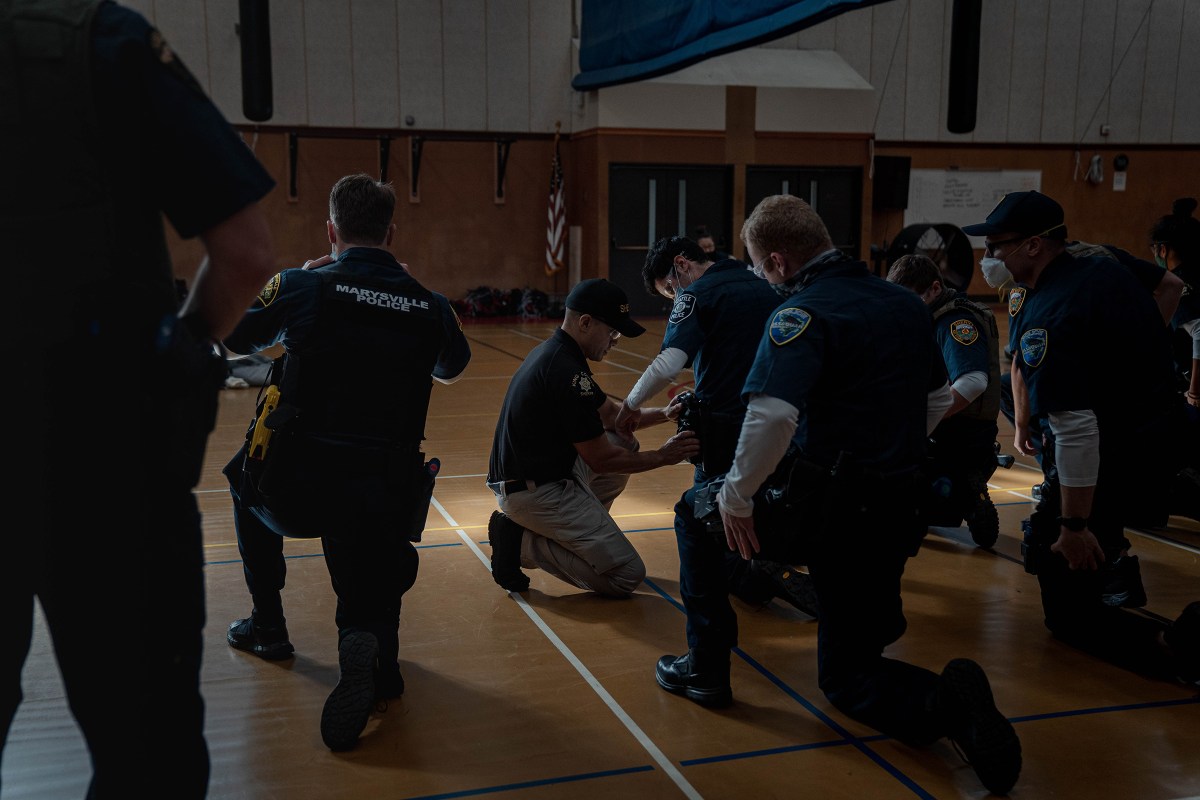
The same budget constraints that community colleges routinely face also decrease the chances they can hire the best full-time instructors who are up-to-date on modern police training. Academies run by cities can have their top officers work as instructors, while at community colleges, “they get who they can get, and maybe they’re good, maybe they’re not,” says Norman Conti, a professor of sociology at Duquesne University who studies police training.
A cadet who attended a North Carolina technical college said one of his instructors celebrated the 2016 election of Donald Trump by saying it would enable officers to “police people in the projects the way they should be policed.” Other instructors screamed obscenities at students, he said, often focusing hazing on women and gay and lesbian cadets. A lawsuit filed in Maryland last year alleged that two cadets suffered brain injuries while in a boxing class taught by an instructor at a community-college academy who had not received any updated training or certification since leaving the Maryland State Police in 1989.
Nor does the marketplace guarantee the best recruits. Police departments usually conduct background checks and psychological screenings before they hire and train someone, but academies have a financial incentive to enroll students and do not vet them as extensively. One Wisconsin cadet told me his fellow students spoke about wanting to get into their first gun fight and made racist comments. “We had some really bad eggs who ended up becoming cops,” he said. Students who pay their own way can behave badly at school, and then finish their training and wait months or years before being hired as officers, while their skills become rusty.
“We might have students who never in a million years would you want them to be police officers, but as long as they pay tuition, they can be taking courses and on the pathway to become a police officer,” says James Densley, a professor of criminal justice at Metropolitan State University in Minneapolis who studies police training. “A lot of the screening that would traditionally have been done upon entry [into a police department] often doesn’t get done until quite late in the process.”
Densley interviewed police chiefs in Minnesota as part of a research project to learn if Minnesota’s system, which outsources training to community and technical colleges, was producing candidates whom the chiefs wanted to hire. Departments were getting hundreds of applicants who had fulfilled the state’s training requirements, Densley found, but police chiefs felt comfortable hiring only a handful of them, sometimes because of concerns about dishonesty, incompetence or even criminal violations. “The process was doing a decent job of providing practical skills, but things like empathy and common sense were completely lacking,” he says.
How an aspiring officer’s dream was crushed
Vanessa Herrera has the credentials that seem ideal for many California city police departments: she’s a bilingual Latina woman who served in the military for eight years. She’d always wanted to go into law enforcement, so in 2015, Herrera enrolled at the Fullerton College Police Academy in Southern California. But two months in, Herrera and her 41 fellow cadets learned that the state had suspended Fullerton’s accreditation for not meeting minimum teaching standards.
Herrera, now 33, discovered that the school had been on the state’s radar for problems since at least 2009, but nobody warned aspiring police officers against paying around $6,000 each to attend it.
“That’s what I found crazy—why wouldn’t anyone say anything to us?” she says.
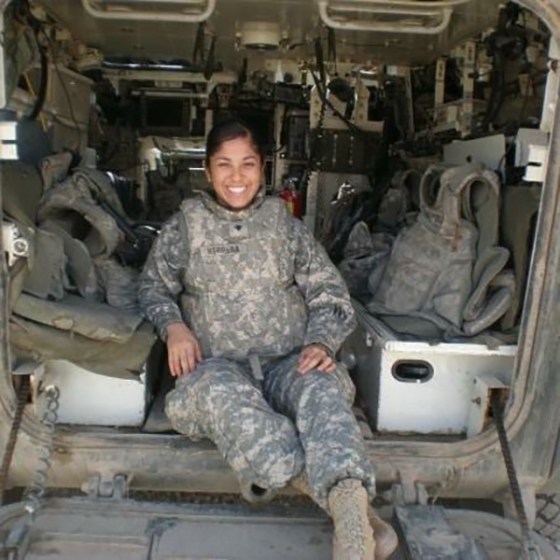
<strong>“After seeing—this is how you guys treat us? This is how you guys are going to be with us? I don’t know that I want to do this then.”</strong>
Like California, most states have Peace Officers Standards and Training or POST boards, which are responsible for setting minimum standards for training and teaching, and for certifying police academies. These boards are made up of law-enforcement officers and a few civilians appointed by the governor and also have some full-time staff, but criminal justice experts say they lack the resources to do in-depth oversight. So, as Herrera learned, academies may operate under the radar for years.
California’s board had found in 2009 that Fullerton College did not have the résumés or documentation of the training required for many instructors. It found that the college was using outdated training materials, was not administering a state-required test, and had “inadequate” procedures for storing firearms.
Because of budget issues, the board did not review the school again until a routine audit in 2015, which turned up more problems. Among other things, the audit found that staff had logged on to the state website to access approved course material only once since 2009, and that was to change an expired password. There was no evidence that Fullerton had made any of the changes the state had asked for in 2009.
The academy “became an unguided, mismanaged ‘Lord of the Flies’ type program in which faculty disregarded state law, ignored state regulators’ requirements, and physically attacked at least one academy student,” according to a lawsuit that Herrera and other classmates filed in 2016. (A judge dismissed the lawsuit, ruling that California law did not allow students to sue because they have received a bad education, according to Michael Jeandron, the plaintiffs’ lawyer.)
The school’s certification was suspended in October 2015, but it waited a week to tell students. Some cadets in the class before Herrera’s were already working as police officers and had to be pulled from their jobs for more training. Herrera’s class was not given the option of transferring their training elsewhere. Some cadets decided to start over at another academy, but not Herrera.
“I guess you could say my dream was crushed,” she says. She returned to working at a craft store, a job she held before attending the police academy.
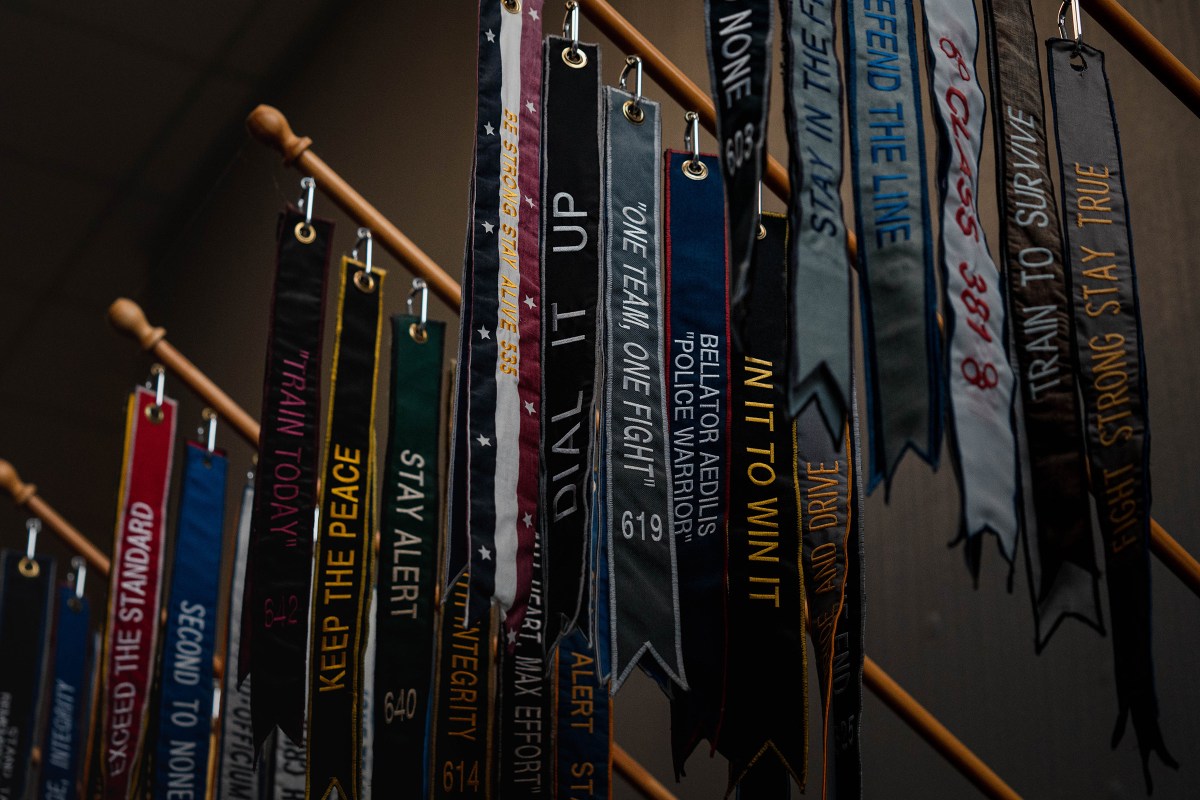
Fullerton College said in a statement to TIME that the state’s actions “came as a surprise” and that the POST board failed to communicate with the college in a reasonable and timely manner to help it resolve the state’s complaints. The college reimbursed Herrera’s class for tuition and the cost of uniforms and other supplies. California’s POST board says that it “prides itself on making sure we are running the most professional and advanced academies in the state, if not the country,” and that what happened at Fullerton was a unique situation that would not occur now, because the board has more funding and more staff.
When POST boards do find problems with training, it may be after an academy has had years of problems. In 2017, the Pennsylvania inspector general found that the State Police Academy had created a climate of cheating by using the same testing material for decades and by sharing answers with cadets. The report found the school had disregarded a 2014 investigation that recommended reforms. Cheating scandals came to light in Georgia this year, in Louisiana in 2019 and at the Santa Fe College Institute of Public Safety in Gainesville, Fla., in 2018.
Some state POST boards say they are able to provide close oversight. Wisconsin has five field reps responsible for maintaining quality at its 22 police academies. These field reps visit classes unannounced and audit schools, which are recertified every two years. “Our accountability record is fantastic,” Steve Wagner, the director of Wisconsin’s Training and Standards Bureau, told TIME. North Carolina also has five field reps who audit classes and drop in on its 62 schools unannounced, and it has shut down schools in the middle of a class if auditors find they are not teaching properly, says Steven Combs, the director of the state’s Criminal Justice Standards Division.
Yet even these boards have no mechanism for advising cadets or police departments which academies are doing the best jobs. Though some states require recruits to pass a statewide exam, others just rely on the schools to verify that each student has fulfilled the state requirements. And no state publicly rates the schools.
A different approach
Police departments that run their own academies have an incentive to provide the best training possible; otherwise their recruits may end up making mistakes that lead to bad PR and costly lawsuits. Washington State has just one academy, run by the state’s Criminal Justice Training Commission. All recruits except those becoming state patrol officers attend it, which ensures they’re all trained in the same methods. The academy, whose main campus is just outside Seattle, frequently welcomes visits from the community. Washington does not let recruits pay their own way to attend the academy, and it requires recruits to have been hired by a department before they enroll.
At the academy, which is under the leadership of former King County sheriff Sue Rahr, recruits keep journals, are trained in de-escalation, and are told that when they encounter a staff member, they should strike up a conversation rather than stand at attention like a soldier. Classes in subjects like shooting a gun or driving a police vehicle focus not just on mastering the skill but on knowing when to use it, Rahr says. Courses are developed with community input, including one on race and U.S. history that starts by teaching recruits about slavery. When voters passed a 2018 statewide ballot initiative mandating changes in police training, reformers just had one place to go—the state academy—to make sure changes were implemented.
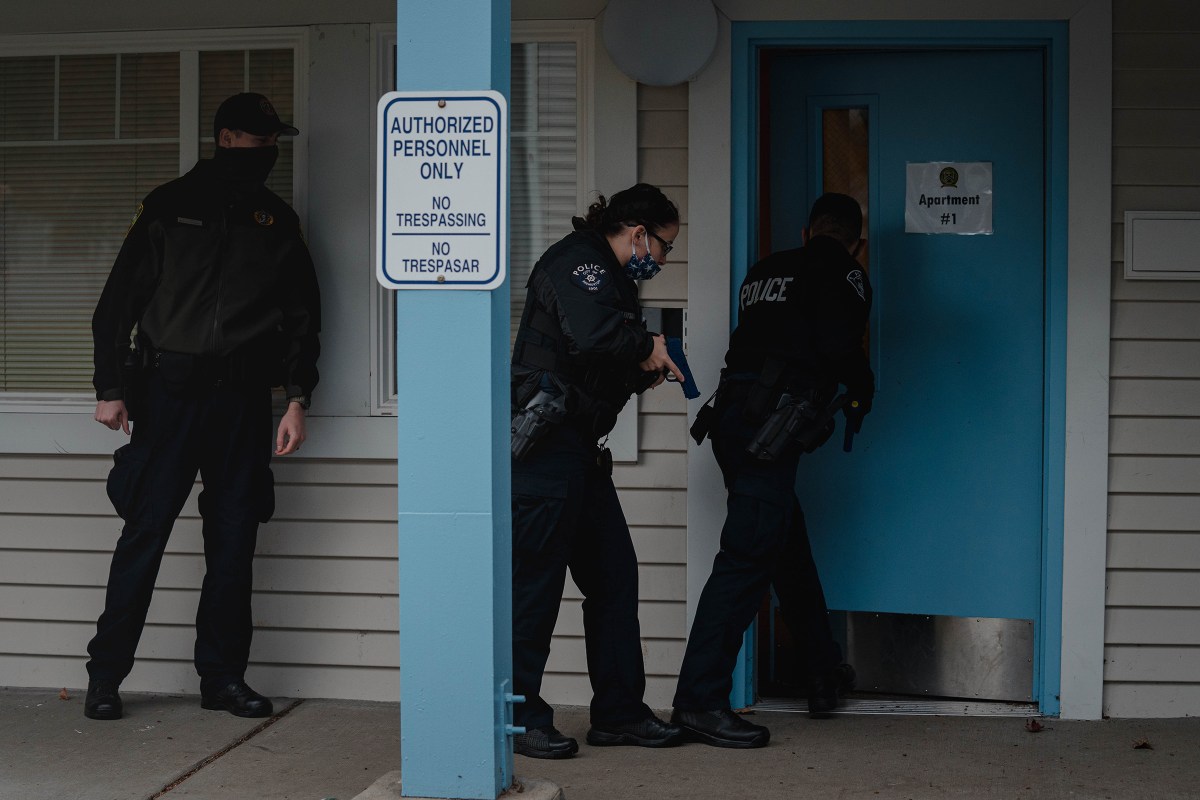
“In my opinion, this is what the Founding Fathers intended—governing with consent of the people,” says Rahr, who served on an Obama-era Task Force on 21st Century Policing that concluded that changing the culture of policing also meant changing the culture of police academies. “Law enforcement is there to serve the community. And we need to listen to what the community wants out of their police department.”
This type of training is expensive, though. The state spends about $16.5 million a year on the academy and on administrative expenses for the Criminal Justice Training Commission, according to Brian Elliott, the commission’s financial manager.
Persuading states to adopt more expensive police training systems is a tough proposition, especially as many slash spending in the current pandemic-related economic downturn and as agencies face pressure to defund police departments. Although the Ohio advisory board that investigated police training in 2015 recommended a reduction in the number of academies, the state now has six more than it did five years ago. Efforts to reduce the number met with resistance from universities, community colleges and the towns where they’re located, says Reginald Wilkinson, the former director of the Ohio Department of Rehabilitation and Correction, who ran that advisory group. “Once you develop these practices, it is almost impossible to change them,” he says.
But without change, would-be law enforcement officers like Earl McGhee and Vanessa Herrera will continue to choose other careers, while unsuitable students will continue to become cops. Herrera says friends tried to persuade her to apply to the Los Angeles police department, but because of her experience at Fullerton, she never did. She eventually put herself through college and hopes to get a job working as a therapist to children with autism.
McGhee is still troubled by his experience in Wisconsin, where the instructor denied directing his offensive comments at McGhee. He says his attempts to stand up to the instructor by filing a formal complaint led classmates to shun him. He’s stung by the fact that only two of his fellow cadets were willing, during the school investigation, to corroborate his version of events.
McGhee says the entire experience made him feel as if he didn’t belong at the academy. He now lives in Washington State, where he has been hired as director of campus security for a university. Many of his old classmates from the Wisconsin academy are now police officers.
– With reporting by Leslie Dickstein and Mariah Espada
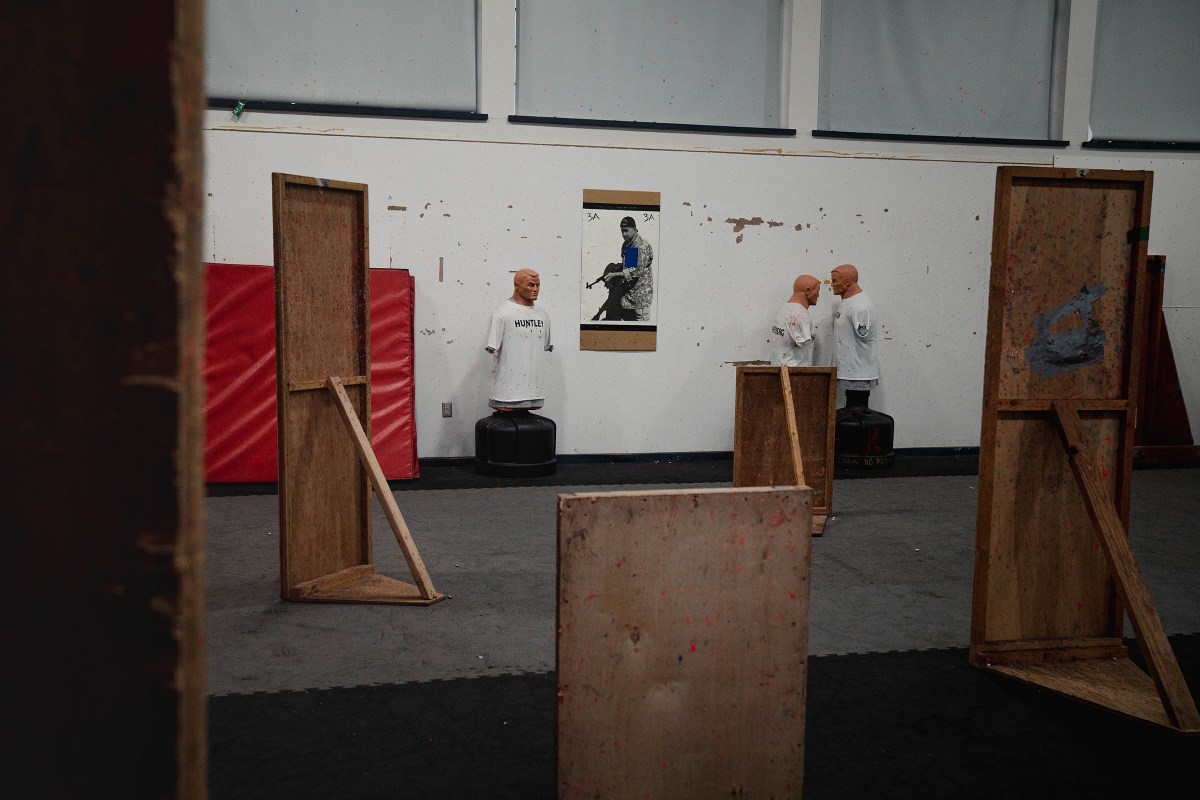

0 Comments